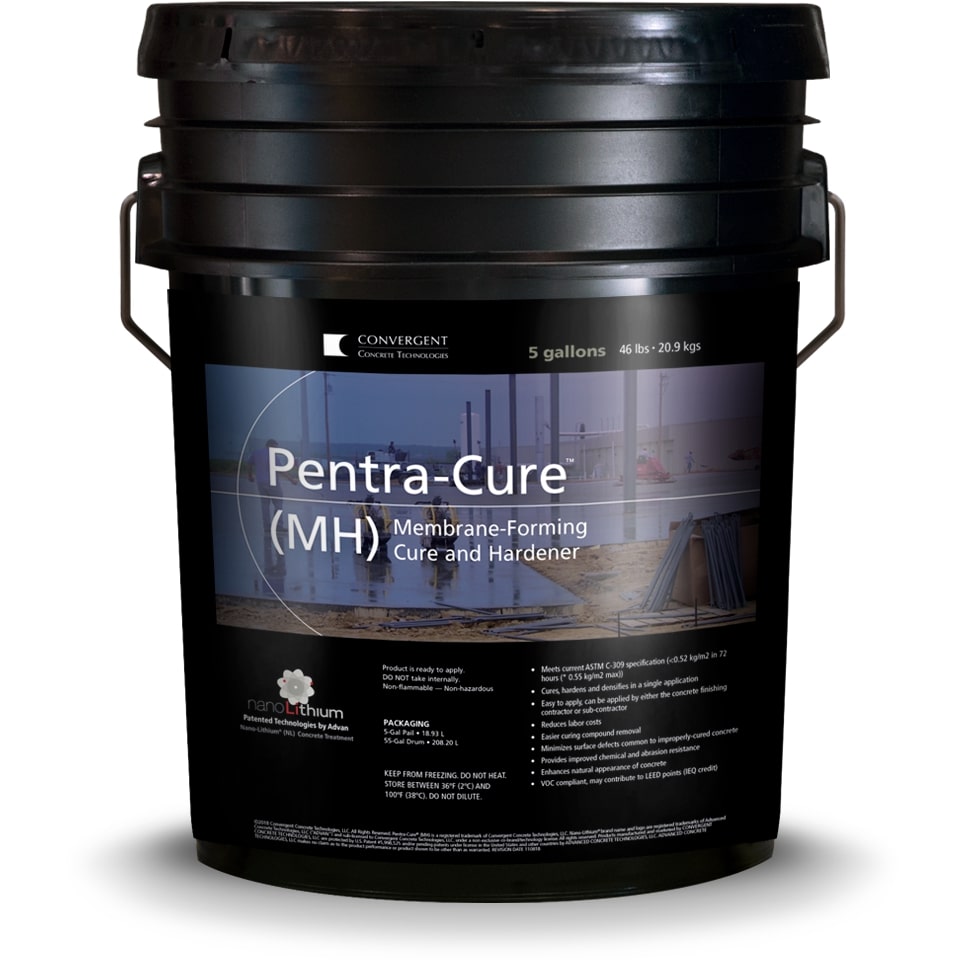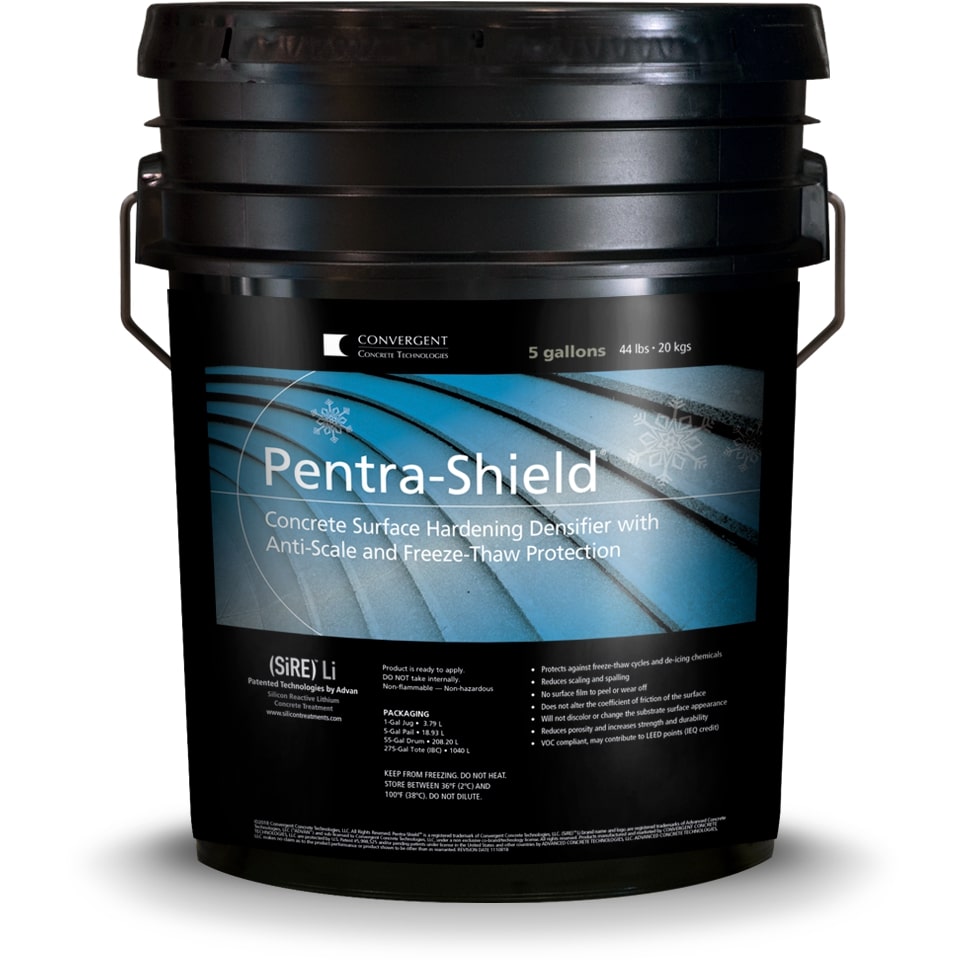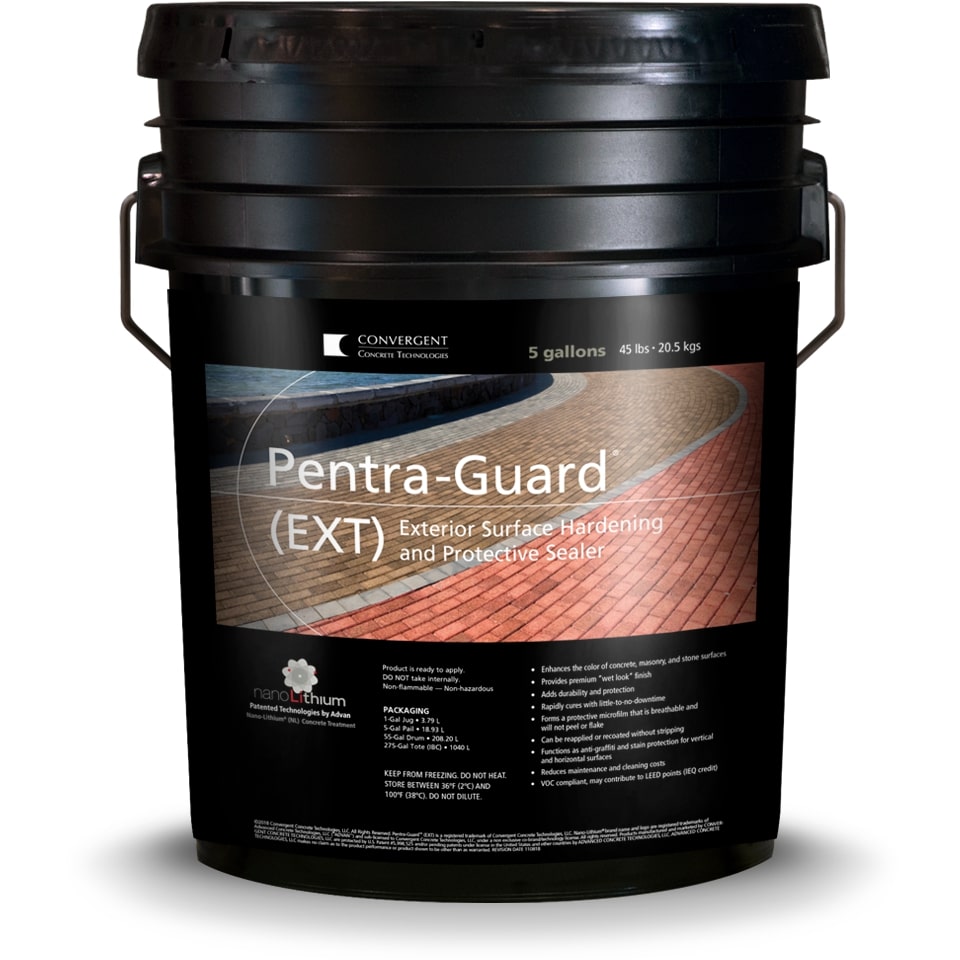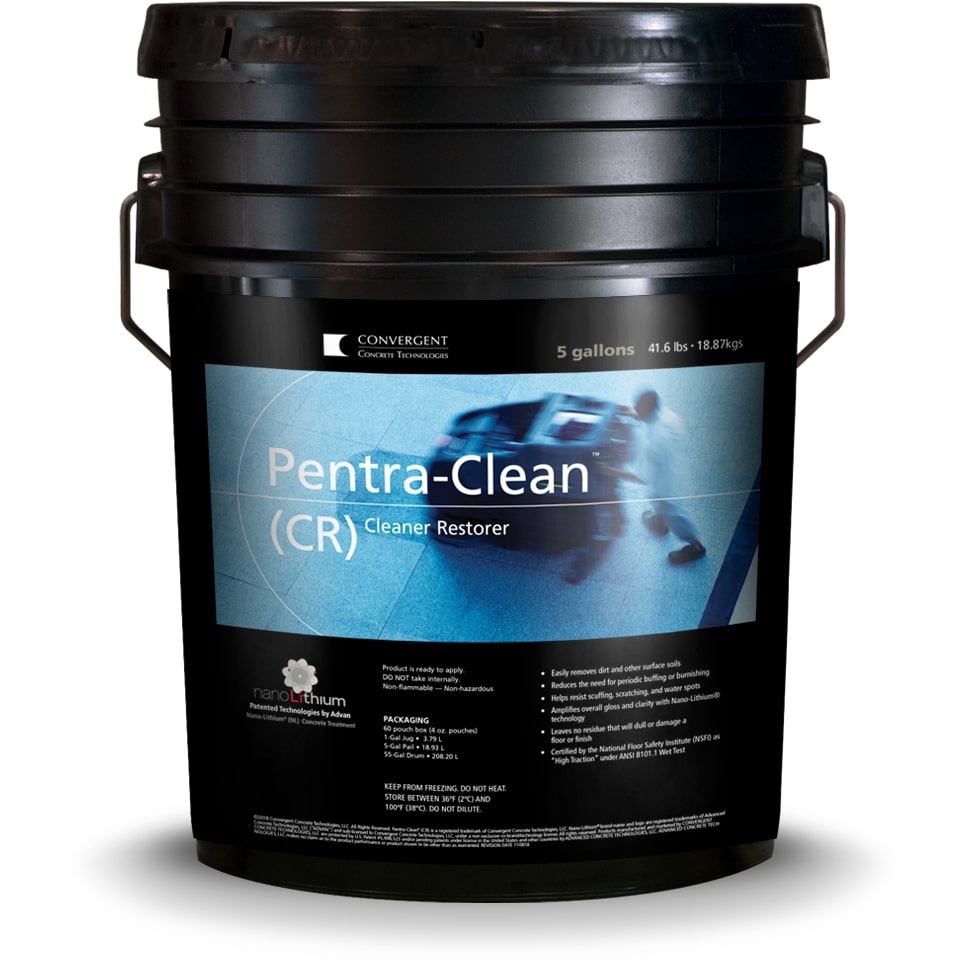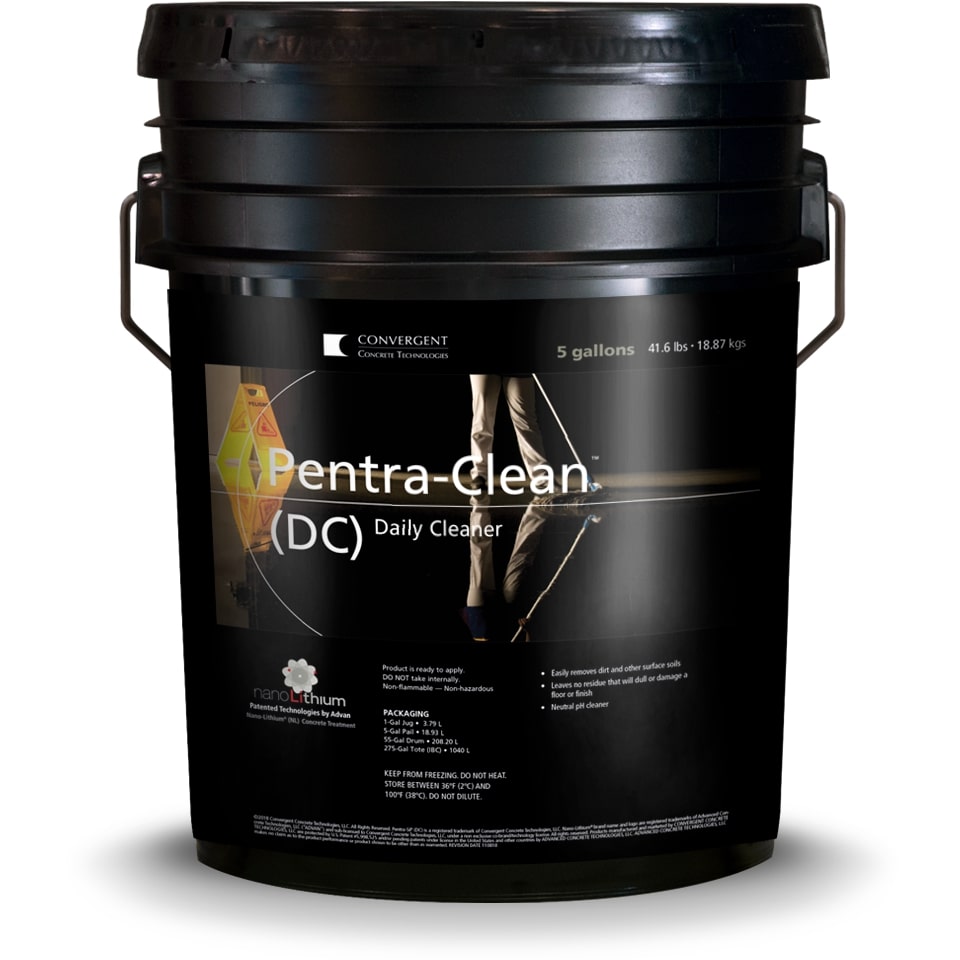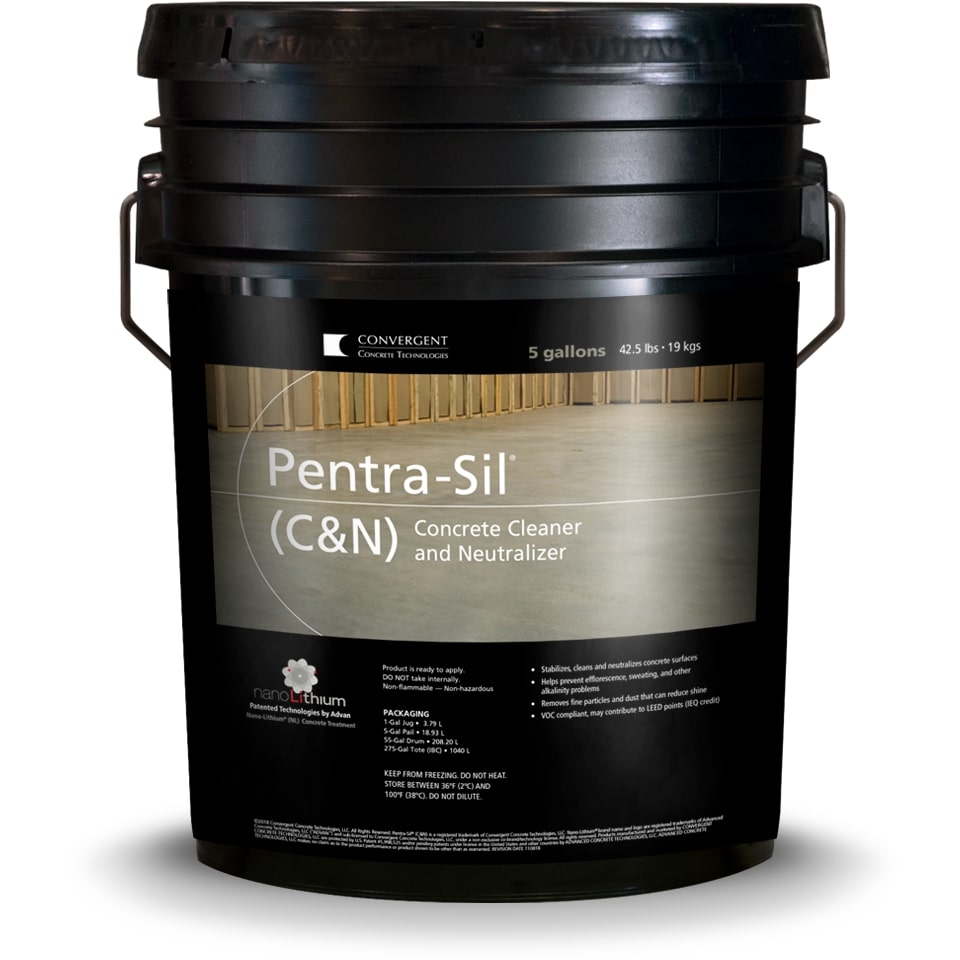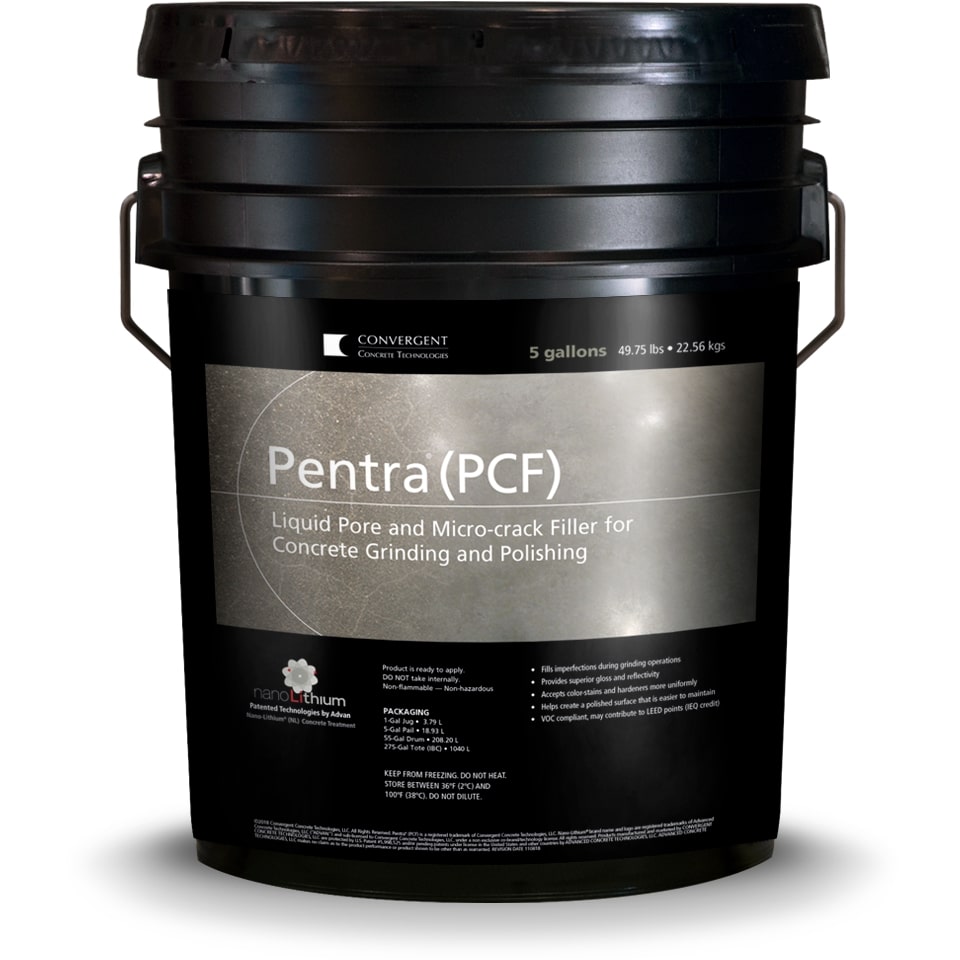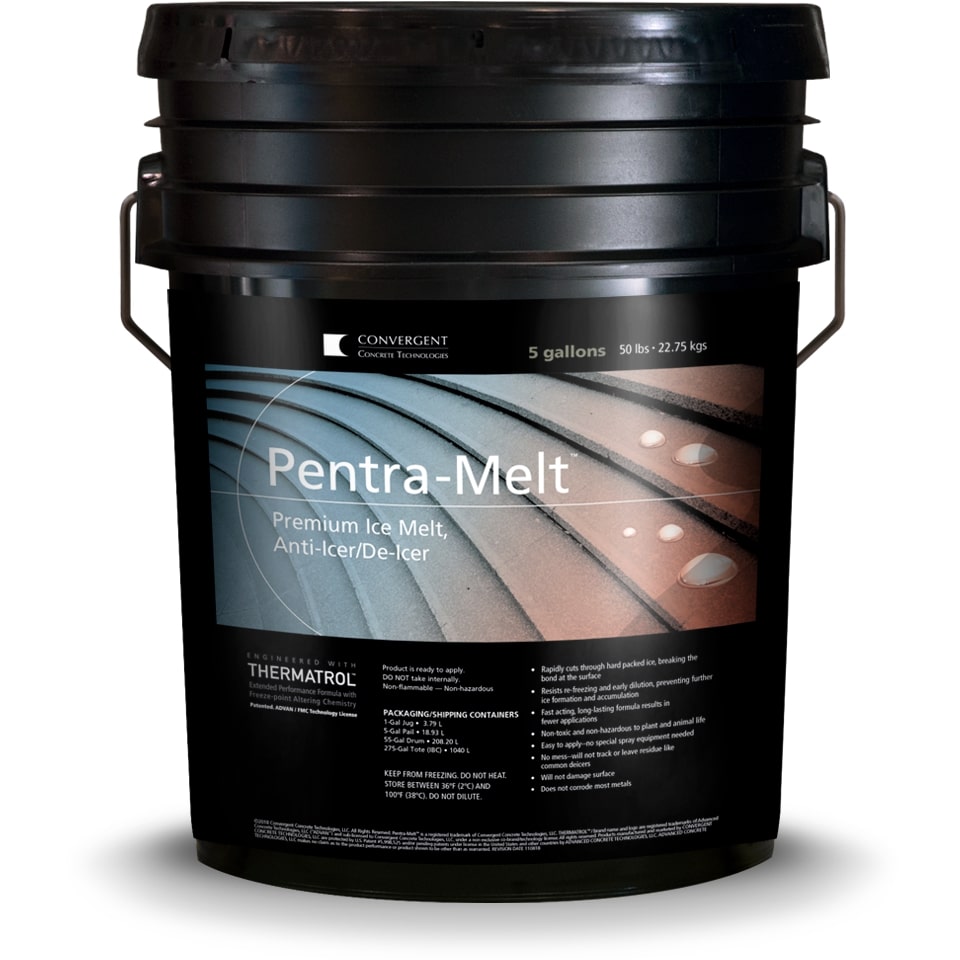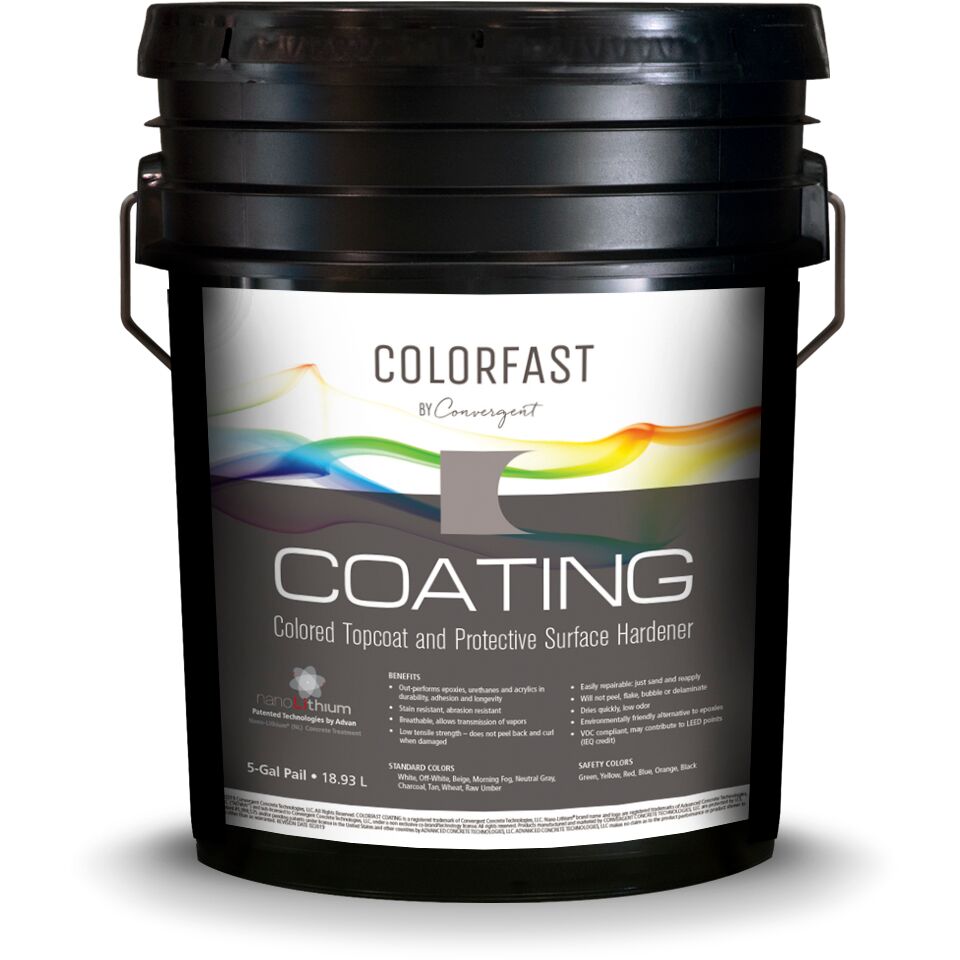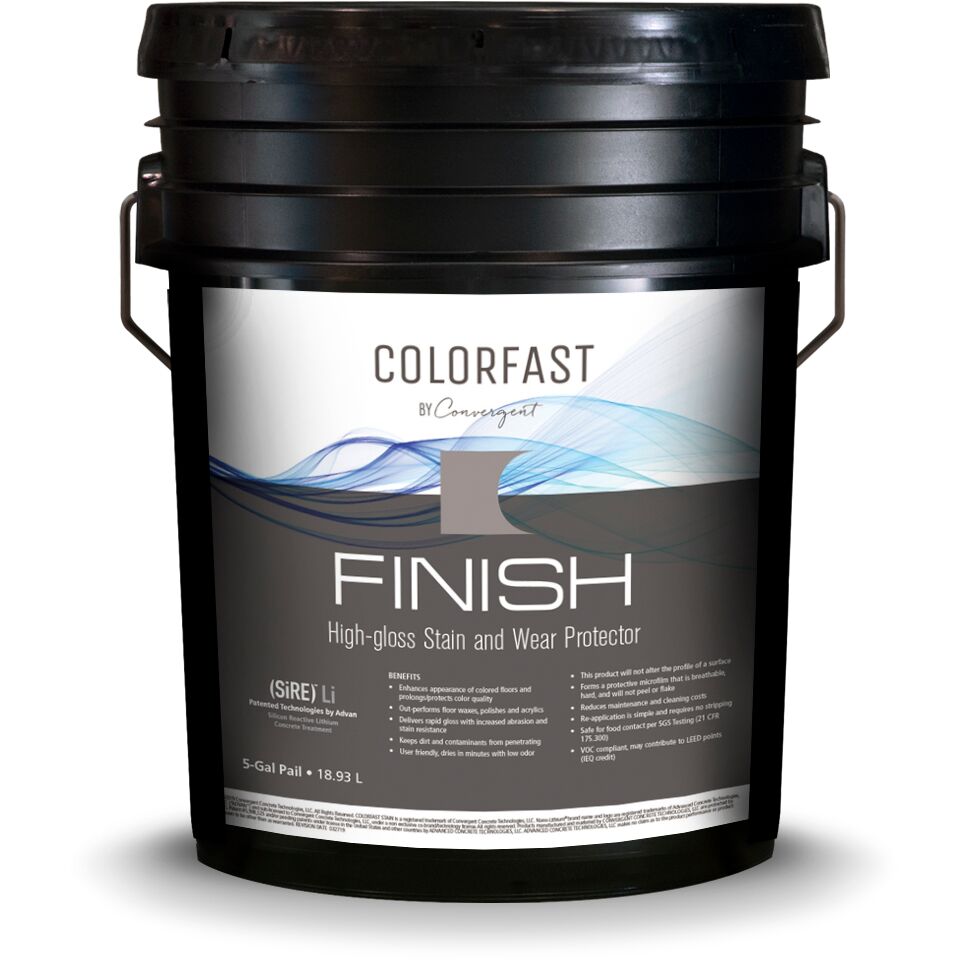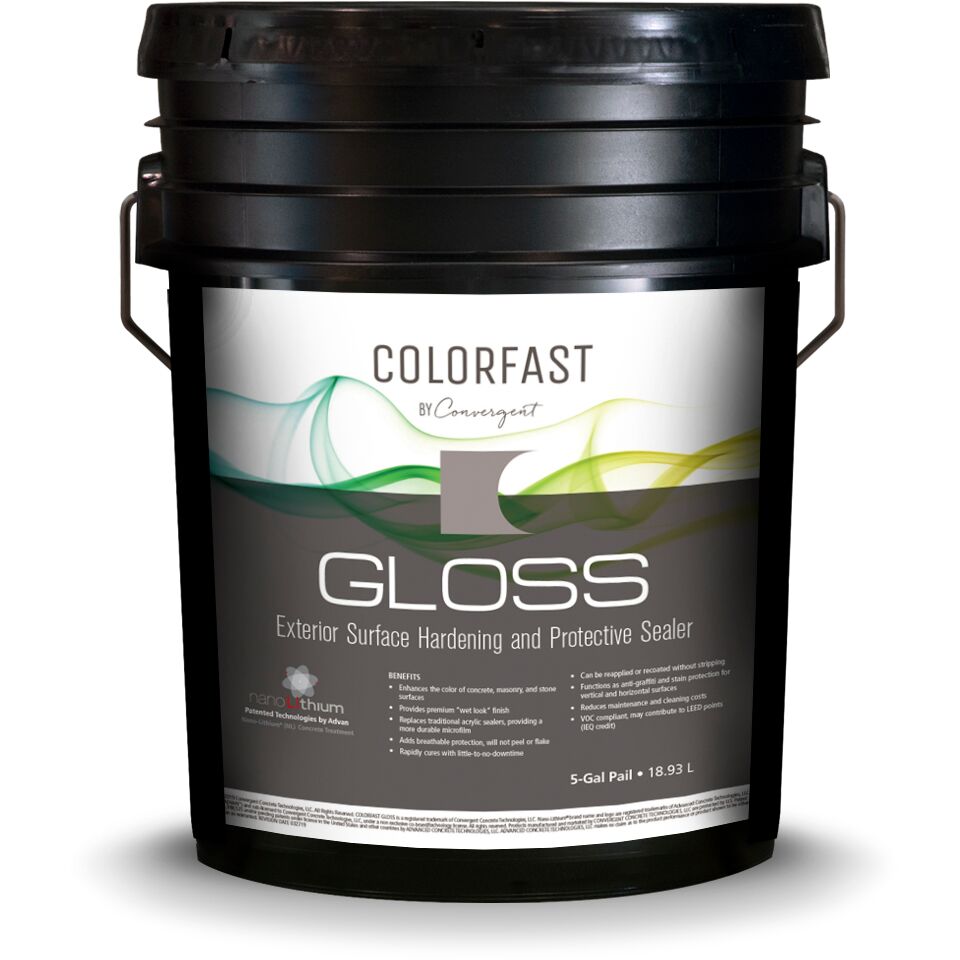Concrete is not only an incredibly versatile flooring material but it can also have a lifetime’s worth of durability if professionally installed and maintained. One of the most important aspects when installing concrete, that will ensure added years to your surface, is concrete floor sealers.
How to prepare concrete parking lots and exterior flooring for winter
Winter means icy temperatures, snow, and water – which are all factors that could be detrimental to your exterior concrete flooring. Just as you would winterize your yard and your house, so too should you take precaution in preparing your exterior concrete for winter. Concrete sealer is arguably your best friend in preparing your concrete surfaces for freezing temperatures, as the material is naturally porous. Sealing your concrete surface before temperatures start to plummet will help to avoid moisture from ice or snow permeating into the concrete surface. This will also help to protect concrete parking lots that are exposed to chemicals and salts used to de-ice large outdoor areas during winter. These exterior concrete areas should be resealed on a cyclical basis to maintain a protective layer, which your manufacturer should be able to advise on, depending on the amount of expected traffic on the surface.
5 Common application problems with concrete sealer - and how to avoid them
Concrete sealers can fail, often due to the application process not being done correctly. Some of the most common application problems are:
- Bubbles: This can be caused if the sealer is applied too thick, if the application was done in hot weather, or if the sealant has been over-rolled
- Peeling: Can be caused by vapor from moisture, over-applying the sealer or contamination during the application process.
- Streaks or lines: This can happen if the sealer dries too quickly during application
- White marks: Any “blushing” or white marks can be the result of applying a solvent-based sealer to a concrete surface that might be wet, meaning that moisture could have gotten trapped and that the sealer could not bond to the concrete surface. If this happens with a water-based sealer, it could be a result of the temperature or humidity conditions not being appropriate for successful application
- Concrete looks blotchy after sealant application: Sealers will bring out the grain and colour of the concrete slab below it, meaning that your end-result might not be what you had in mind. If you would like a cohesive look and might be concerned that the color might change after applying a sealer, you could use a penetrating water repellent sealer.
Concrete sealer - the best way to protect concrete from moisture
Working with concrete can be simple, yet there’s a methodical approach to understanding the drying process to know when you are able to seal a concrete floor. You could apply the sealer too early, or too late, and both situations will leave you with unwanted results and consequences. This is why you have to understand the moisture condition of your concrete slab before considering to apply any finishing to it. It is important to know the concrete manufacturer’s specifications for the recommended moisture condition (which can differ from product to product). There is quite a science to how concrete and moisture co-exist, but here’s a brief explanation of the process. Concrete has both internal and external moisture sources, as the cement would have been mixed with water to create the concrete, and external factors such as rain, humidity, leaking water pipes or poor drainage could affect your concrete. While your concrete is curing and drying, excess water will move through capillaries that have formed and moisture will be released upwards. This moisture will never stop moving, as you won’t be able to control the external factors but once the concrete is sealed, a certain point of equilibrium will be reached to restrict moisture from evaporating to the surface of the concrete slab.
The importance of concrete sealer in preventative maintenance
Concrete sealers have a range of benefits when it comes to preventative maintenance, and no matter which type of sealer you choose, they will all offer the following advantages to increasing your concrete’s lifespan:
1. Mold inhibition
As already established, concrete is a porous material and prone to absorbing moisture. If moisture is given the chance to remain on your concrete for lengthy periods, mold will build and result in discoloration on your concrete flooring. In sealing your concrete floor, you will prevent mold from growing.
2. Durability
Your concrete can be affected by external elements such as too much sun exposure, UV damage, or winter conditions, which can lead to problems such as scaling or cracking. Concrete can also discolor if exposed to the harshness of changing weather conditions – to prevent this, use topical or integral sealers to ensure that your concrete’s color stays protected.
3. Longevity
A concrete sealer can increase your external concrete flooring’s lifespan to last for many years to come. The average concrete driveway is estimated to last 30 years, which a concrete sealer will help you to achieve.
Different types of concrete floor sealer
Penetrating sealers
These sealers penetrate the concrete to form a chemical barrier to guard against moisture and are used to protect concrete surfaces from exposure to water. These sealers are generally used to provide protection against freeze-thaw cycle damage, de-icing salts and efflorescence.
Filming concrete sealers
Filming sealers create a thin protective barrier on the surface of the concrete and provide a thin, breathable barrier on top of the concrete. Acrylics are the most common filming concrete sealers and be aware that these sealers can affect the finished look of your concrete. Water-based or solvent-based sealers will have different results but your concrete will have a darker and/shinier look to it.
Enhancing sealers
As the name suggests, these sealers enhance your concrete’s appearance. This film barrier is thicker than that of a filming sealer and provides a thick and durable finish that protects against water. These sealers are available in a variety of finishing sheens from glossy, to satin, to matte. These sealers offer versatile interior options as color pigment can be added to achieve the color you have in mind.
Gloss sealers
If you’re looking to achieve the “wet look” or darker surfaces, these sealers are the way to go. They can be used for a range of uses, such as to darken stamped concrete surfaces or brick pavers. Once it’s applied to a surface, the surface will darken and the appearance will stay that way and can be a great solution to reinvigorating aged surfaces that need a color boost – while also offering protection against moisture.
Concrete repair - how to prepare cracked concrete flooring for sealing
- Always start by cleaning the concrete first to ensure that there is no dirt or grease to help the filler you will be using to bond to the cement.
- Chisel the crack, also known as “keying”, to make the base of the crack bigger on the inside than it is on the surface to help the filler bond with the cracked cement.
- Again, clean the concrete surface to ensure that there is no dust or debris that could affect your finishing. Sweep and vacuum.
- When applying concrete filler or mixed concrete patching, slowly fill the cracks or trowel the patch into the actual crack. Keep an eye on the appearance of the filler to see whether it is settling and if not, use a trowel to create a smooth appearance.
- Allow to cure overnight or for a period recommended by the manufacturer. If more patching is needed afterwards, apply another patch to create a smooth finish.
- Your cracked concrete floor should now be ready for sealing. (Again, ensure that you’re working on a clean surface).
The concrete curing process - how to prepare new polished concrete for sealing
The curing process is imperative to your concrete’s strength development and long-term durability. Curing times will differ according to a range of factors that all have an influence on the curing process:
- Mixture ratio
- Ambient weather
- Anticipated external conditions
- Strength of concreted
- Area covered
The curing process has three fundamental requirements, which are:
- Continue adding water to your concrete during the initial hardening process to prevent moisture loss.
- Reduce the loss of mixing water from the surface of your concrete to prevent surface damage.
- Use heat or additional moisture to get stronger concrete, faster.
For large surface areas, a diamond disc grinder is usually used to drive coarse to fine grit discs into the concrete. Once the surface is level, the polishing process continues by using finer grit diamond patches until the finish you want is achieved. Polishing can be done on a wet or dry basis, but both methods will leave waste in either a slurry or dust form that will need to be disposed of to keep the area clean.
How to repair and prevent concrete spalling
Spalling can occur when water enters concrete and typically rusts embedded reinforcing steel, resulting in flaking or peeling of the concrete surface. Repairing concrete spalling should always be assessed on a case-by-case basis, taking the damage and type of structure into account.
Basic steps for repairing concrete spalling
- Clean the area that has to be repaired. Ensure that all dirt and stains are removed. This can be done with the help of a pressure washer if needed.
- Remove any loose concrete using a hammer and chisel or a grinder. Tap the surrounding area with a hammer to note any hollow sounds that might indicate further deterioration which should also be attended to. Clean the area of dust and debris.
- Clean the steel bars from any dirt or corrosion with the help of a wire brush and cover the rebar with an anti-rust coating.
- If you need to do a deep repair of the spalling that is more than a third of the depth of the concrete itself, you might need to install new rebar or do a full-depth restoration. If the spalling is shallower than this, you can typically perform a surface repair. Roughen the surface that has been affected by the spalling and apply an adhesion agent that will assist with the bonding process. Patch the area with a material that has a similar thermal expansion to that of the concrete.
- Just as you would do if you were restoring cracks, finish off the surface by using a trowel to smooth it over and allow for curing time.
- Apply your floor sealer to prevent water from entering your concrete again.
If you need any help or advice with concrete floor sealers, whether for your home or for a commercial project, get in touch with our innovative team at Convergent Concrete Technologies today.



















